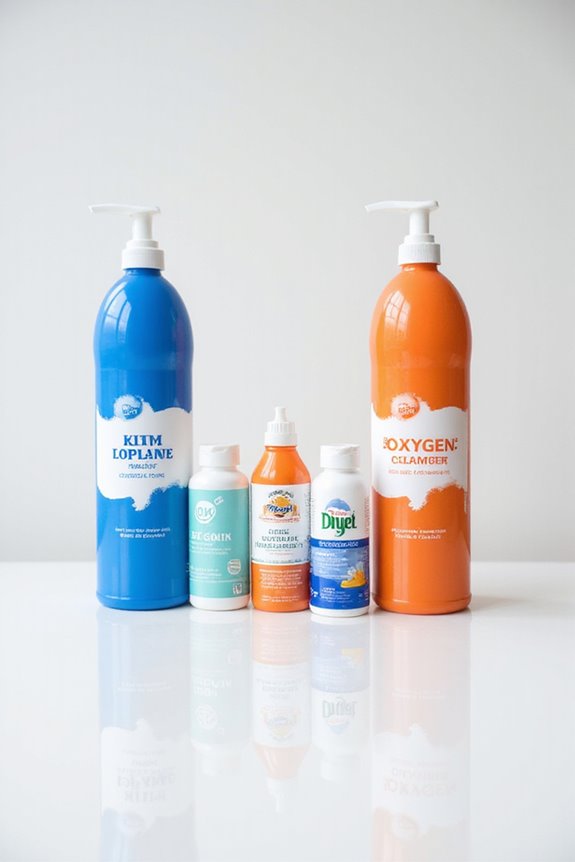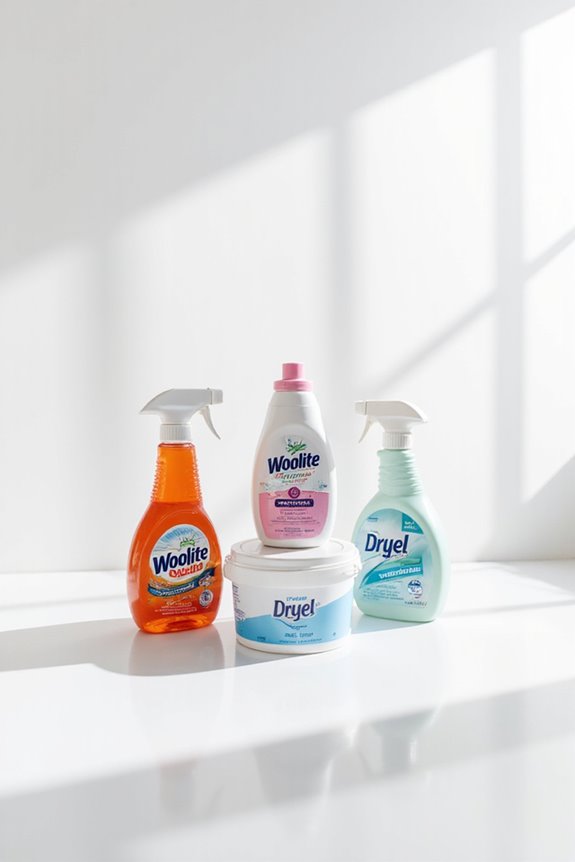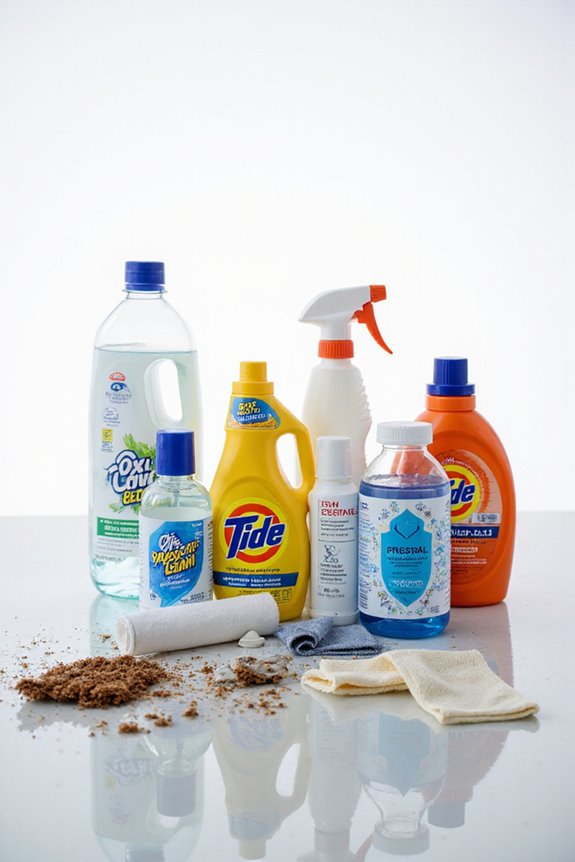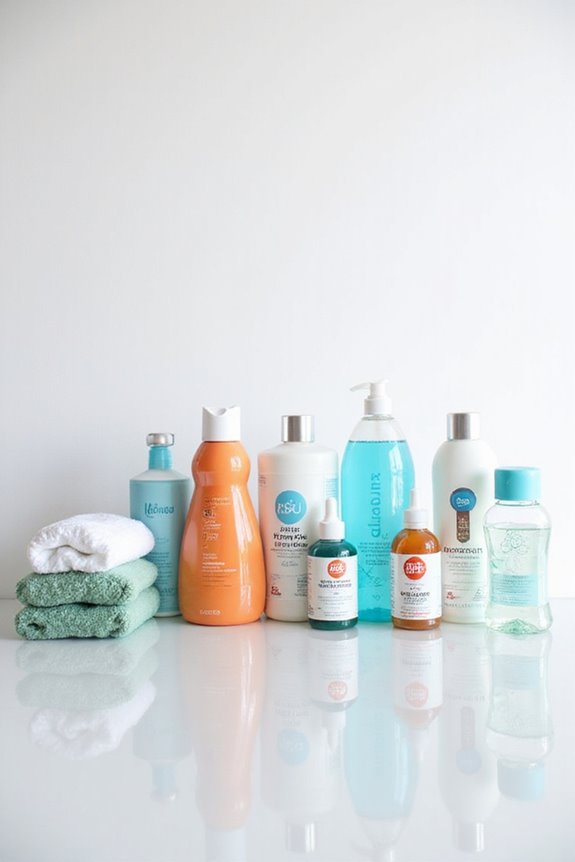When we’re tackling tough stains, enzyme and oxygen stain removers both have their perks. Enzymes are great for protein stains like blood and sweat, breaking them down quickly, while oxygen cleaners shine with coffee and wine stains due to their oxidation power. Enzymes work best in cooler temps, but oxygen products can handle any water temperature. Plus, oxygen options are budget-friendly. If you’re curious about how each performs on different stains, let’s uncover more details!
Key Takeaways
- Enzyme stain removers target protein stains effectively and perform best when applied soon after staining.
- Oxygen stain removers are better for polyphenol stains and can be used in hot or cold water.
- Enzymes are gentle on fabrics and suitable for sensitive individuals, while oxygen-based options reduce color fading risks.
- Enzyme products tend to be more expensive and often require specialty brands, whereas oxygen options are widely available and affordable.
- Both types are safer than traditional bleaches, but enzyme products should be stored away from heat and moisture for best results.
Differences in Cleaning Mechanism
When it comes to cleaning stains, we often wonder what makes enzyme and oxygen stain removers different. The mechanism comparison is quite fascinating. Enzymes work through a process called enzymatic specificity, where they latch onto specific stain molecules—like proteins or fats—and break them down into smaller, water-soluble pieces. This means they tackle stains precisely without harming the fabric. On the flip side, oxygen stain removers release reactive oxygen species that broadly oxidize stains, which can risk fading colors or damaging fibers. While enzymes do their work quickly, oxygen-based options often take longer and need higher temperatures. So, whether you’re dealing with spaghetti sauce or grass stains, knowing these differences can help us pick the right cleaner for the job! Additionally, enzyme stain removers are often made with eco-friendly formulations, making them a safer choice for the environment.
Effectiveness by Stain Type
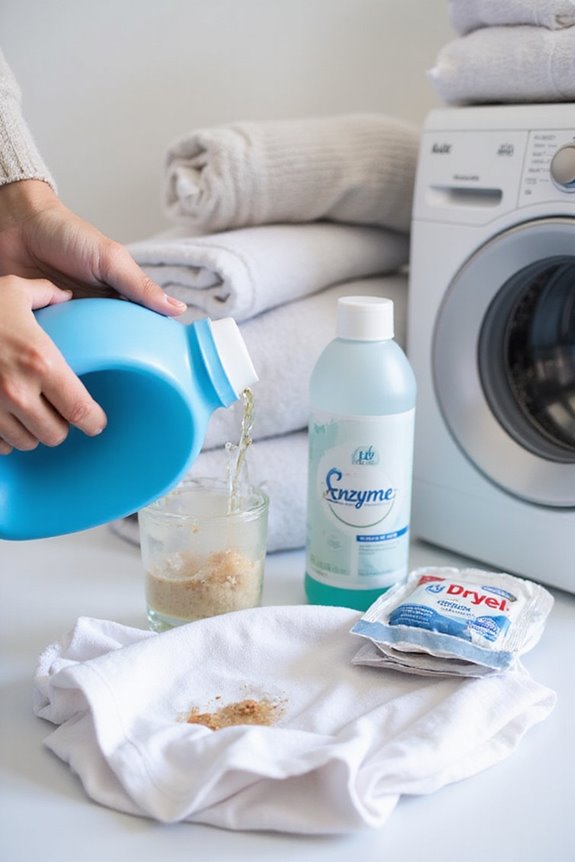
Understanding how different stain removers work can really help us tackle pesky stains more effectively. For protein stains like blood and sweat, enzyme cleaners shine by breaking down those tough proteins quickly. We’ve seen how they outperform oxygen-based removers on fresh stains. In fact, enzyme-based formulas are particularly effective for removing blood stains, as they target protein compositions directly.
When it comes to polyphenol stains from wine or coffee, oxygen cleaners take the lead. They work wonders through oxidation, making those stains fade away.
For plant stains, both enzymes and oxygen removers can be effective, but enzymes are particularly great on fresh grass stains.
However, with oil stains, both types struggle without special additives. So, knowing which remover to use can make all the difference in our stain-fighting adventures!
Usage Conditions and Durability
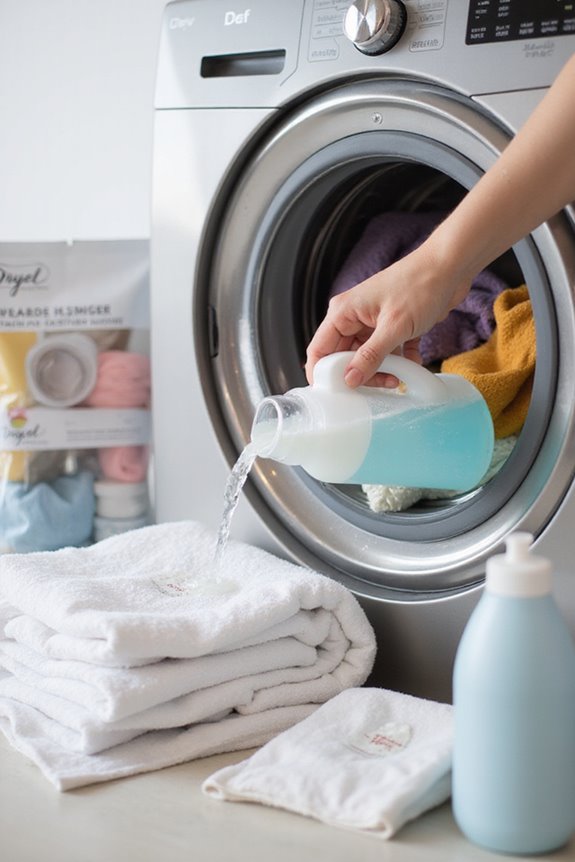
After figuring out which stain remover works best for different types of stains, it’s time to look at how we can use these products effectively. For enzyme stain removers, application timing is vital; they work best when applied soon after the stain occurs. We should remember to use them in cooler temperatures, too. Oxygen stain removers, on the other hand, are more forgiving. They can handle hot or cold water, making them great for various wash cycles. When it comes to storage conditions, we need to keep enzyme products away from heat and moisture to maintain their effectiveness. Meanwhile, oxygen-based cleaners have a longer shelf life, especially if stored in a dry, cool place.
Safety and Fabric Impact
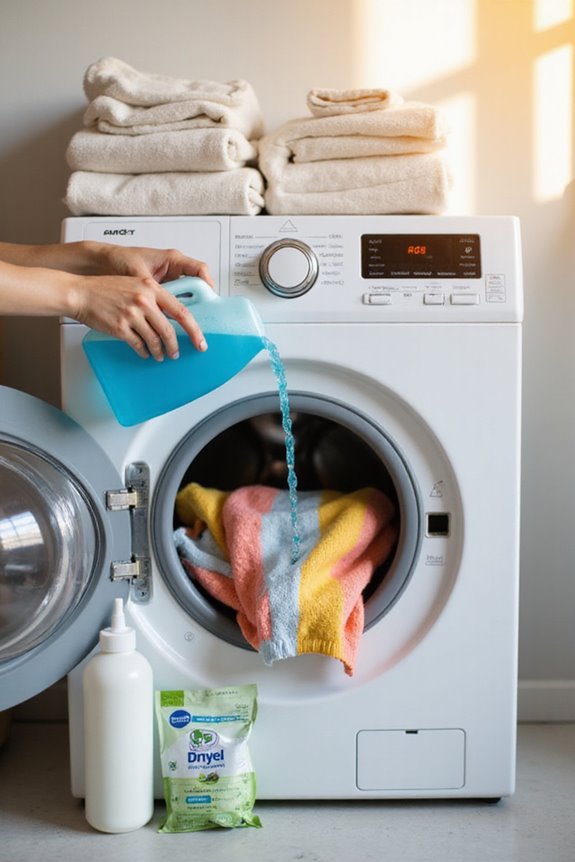
While we all want our clothes to look their best, it’s crucial to contemplate how stain removers impact both our fabrics and our safety. Enzyme stain removers use natural enzymes that are gentle on most fabrics. They’re great for families, especially those with sensitivity considerations, as they’re often free from harsh chemicals. On the other hand, oxygen-based removers use oxygen molecules to tackle stains without the risk of fading colors. They’re also eco-friendlier, but we still need to dispose of them responsibly to minimize environmental impact. Ultimately, both options are safer than traditional bleaches, but our choice should reflect the fabric type, the stains we’re dealing with, and our own skin sensitivities. Additionally, opting for products with biodegradable ingredients can further enhance our commitment to environmental responsibility.
Cost and Product Availability
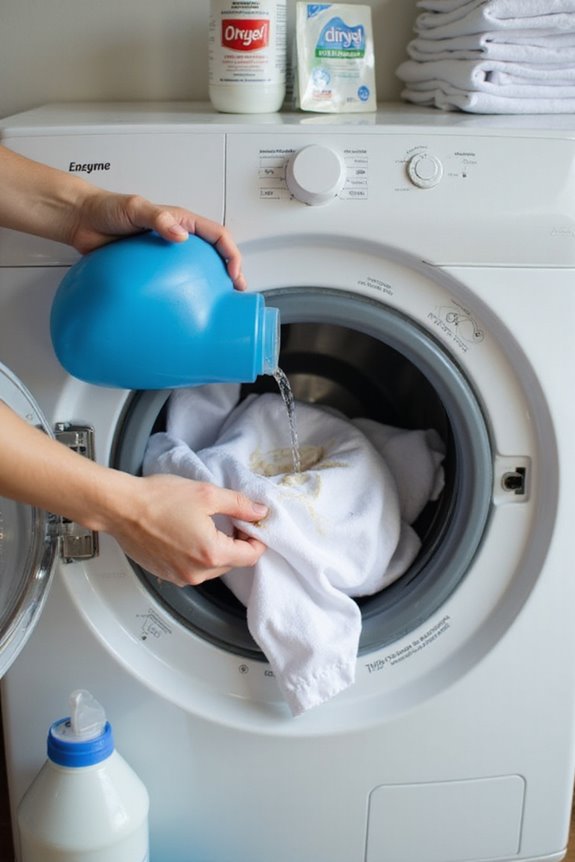
When it comes to choosing stain removers, cost and availability can definitely sway our decisions. Enzyme-based stain removers typically range from $12 to $27. While their advanced formulations pack a punch, they can be pricier per use. On the other hand, oxygen-based alternatives are more wallet-friendly, with some as low as $1.10 per 100g. We can easily find them in local stores or online, thanks to their mass-market appeal. Additionally, many oxygen detergents perform well in both hot and cold water, maximizing versatility in cleaning options.
Enzyme products, however, often come from specialty brands, requiring membership for access. Their pricing strategies reflect consumer preferences for eco-friendly options. So, while we may lean towards enzymes for their sustainability, we can’t ignore the cost-effectiveness of oxygen-based products. It’s all about balancing our priorities!
Frequently Asked Questions
Can Enzyme and Oxygen Stain Removers Be Mixed Together?
We shouldn’t mix enzyme and oxygen stain removers without caution. Their compatibility issues can hinder effectiveness. Let’s follow guidelines and apply them sequentially for ideal results, ensuring we safely tackle those stubborn stains together.
How Long Should I Let Stain Remover Sit Before Rinsing?
When it comes to stain removal techniques, we recommend letting the stain remover sit for its ideal soaking time, typically between 5 to 30 minutes, depending on the fabric and severity of the stain.
Are There Specific Fabrics to Avoid With Oxygen Removers?
Did you know that over 70% of fabrics can safely use oxygen removers? However, we should avoid delicate fibers like silk and wool, as fabric compatibility is essential for effective stain removal techniques without damaging our clothes.
Do Enzyme Stain Removers Have an Expiration Date?
Enzyme stain removers don’t always have a clear expiration date, but their longevity affects stain removal effectiveness. We should store them properly to maintain their potency and guarantee they work when needed.
Can I Use Oxygen Removers on Colored Fabrics Safely?
Absolutely, we can safely use oxygen bleach alternatives on colored fabric! These gentle giants clean effectively while preserving color vibrancy. Just remember to test first for colored fabric safety, ensuring no unexpected surprises occur.

